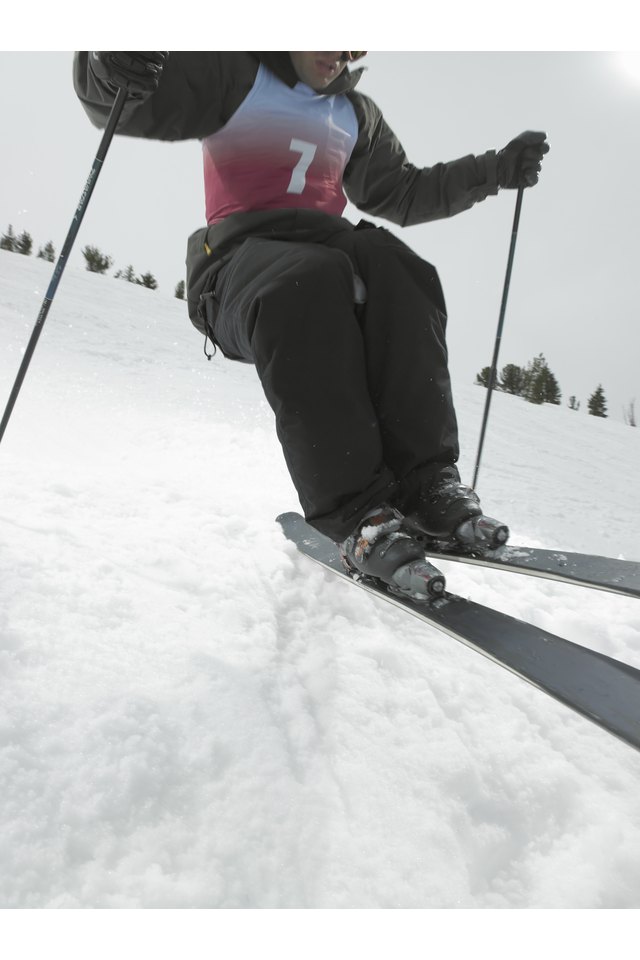Sore Ankles After Skiing

Skiing requires balance and control, which can tax your muscles and joints considerably. The basic stance for downhill skiing is a partially flexed ankle. Skiers who are not used to this position or who push themselves past their body's limits may encounter sore ankles after skiing. This is a common apres-ski complaint that is minor and temporary in most skiers. Those with severe ankle pain should contact a physician.
Function of the Ankle
The ankle joint may be small, but it must be strong to carry your body weight constantly as you stand, walk or make almost any other type of movement. The ankle plays a crucial role in the balancing act you must perform while you ski. This small joint flexes, extends and rotates to allow you forward, backward and lateral movement on the slopes. Warming up with a short walk, jog or a set of jumping jacks helps loosen up the ankle so it can do its job without problems when you ski. Balancing on a wobble board for two to three minutes, several times a week, can also improve your balance to prevent sore ankles.
Muscle Strengthening
Strengthening your ankles, or more accurately, the muscles and other soft tissues that support the ankle joints, can improve your balance and minimize soreness after a day of skiing. First, perform easy rotations and flexing exercises to increase your range of motion and flexibility. Point your toes and turn your ankles clockwise, then counter-clockwise. Rotate for 15 seconds in each direction. Strengthen the joint with scrunching exercises. Curl your toes up as if you were trying to pick up a towel or a marble with your foot. Use actual props if it helps you work the right muscles, completing 10 repetitions. Finally, an at-the-wall calf stretch not only stretches out your lower leg, but also strengthens and stabilizes your ankles to prevent pain after skiing. Stand facing a wall with your palms touching the surface. Place your feet so that one is in several inches in front of the other. Keeping your back leg straight and your front leg bent, push against the wall. You should feel a stretch in your back calf. Hold for at least 15 seconds.
Proper Boot Fit
Ski-related ankle soreness may not come from weak ankles and poor balance, but simply a boot that doesn't fit quite right. Ski boots are tasked with giving you ankle support and also allowing your ankles to flex appropriately. Finding the right combination in a boot is not always easy. Generally, inexperienced skiers perform better with softer boots that give more; this will also let you move your ankle without straining the muscles. More knowledgable skiers tend to have the balance, coordination and conditioning needed to wear a stiffer boot without repercussions. However, try on a variety of boots, including those with adjustable flex, until you find a style that is comfortable.
Dealing With Injuries
Ankle injuries are common in skiers, snowboarders and athletes who participate in other snow sports. Ligament and tendon tears, strains and muscle pulls go with the territory. Injuries that do not improve over the course of a few days with icing, rest and over-the-counter pain relievers such as ibuprofen and acetaminophen may require more advanced medical care. Consult your doctor when pain is severe or if you cannot bear weight on your ankle.
References
Writer Bio
Erica Roth has been a writer since 2007. She is a member of the Society of Professional Journalists and was a college reference librarian for eight years. Roth earned a Bachelor of Arts in French literature from Brandeis University and Master of Library Science from Simmons College Graduate School of Library and Information Science. Her articles appear on various websites.
